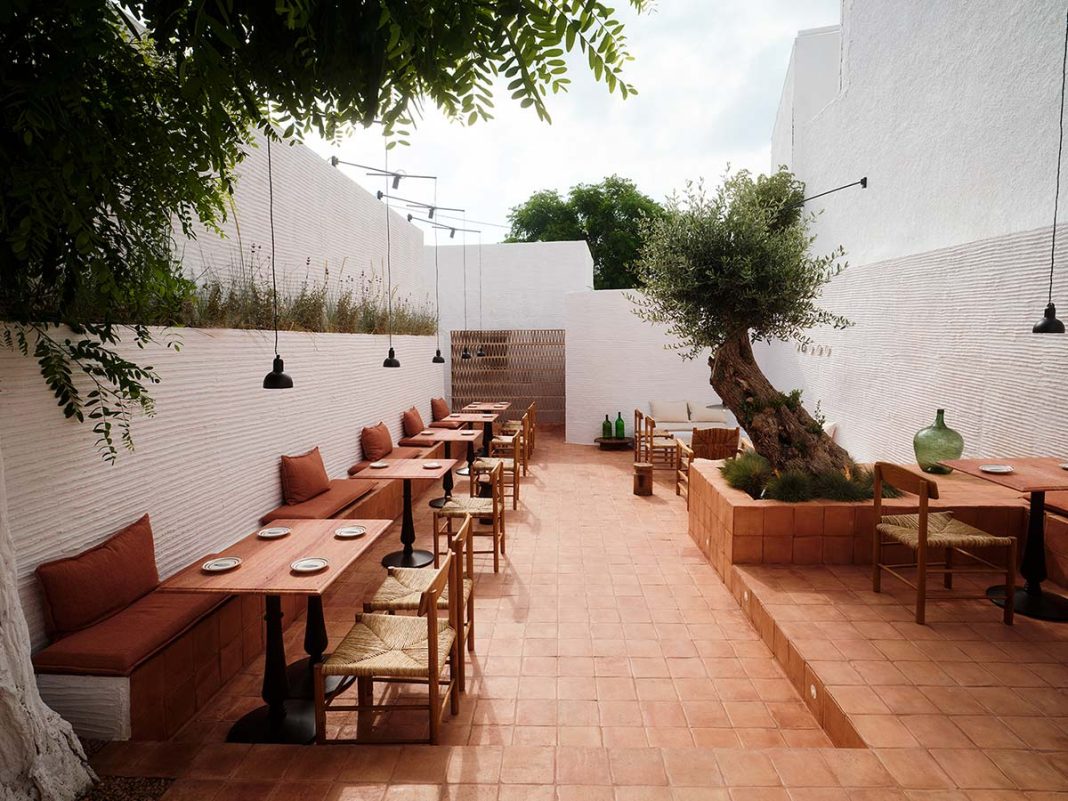Envisioned by Thanasis Panourgias and Harry Spyrou, two restauranteurs with vast experience developed in Athens, Mykonos and New York, and by Leon Economidi, a hotelier in Los Angeles and London, Bardot is a restaurant offering a culinary experience based in modern Greece. The drinks menu reformulates the most famous Greek flavors, like the peach Negroni and the black salt margarita, matched with a selection of Greek tapas made with local ingredients.
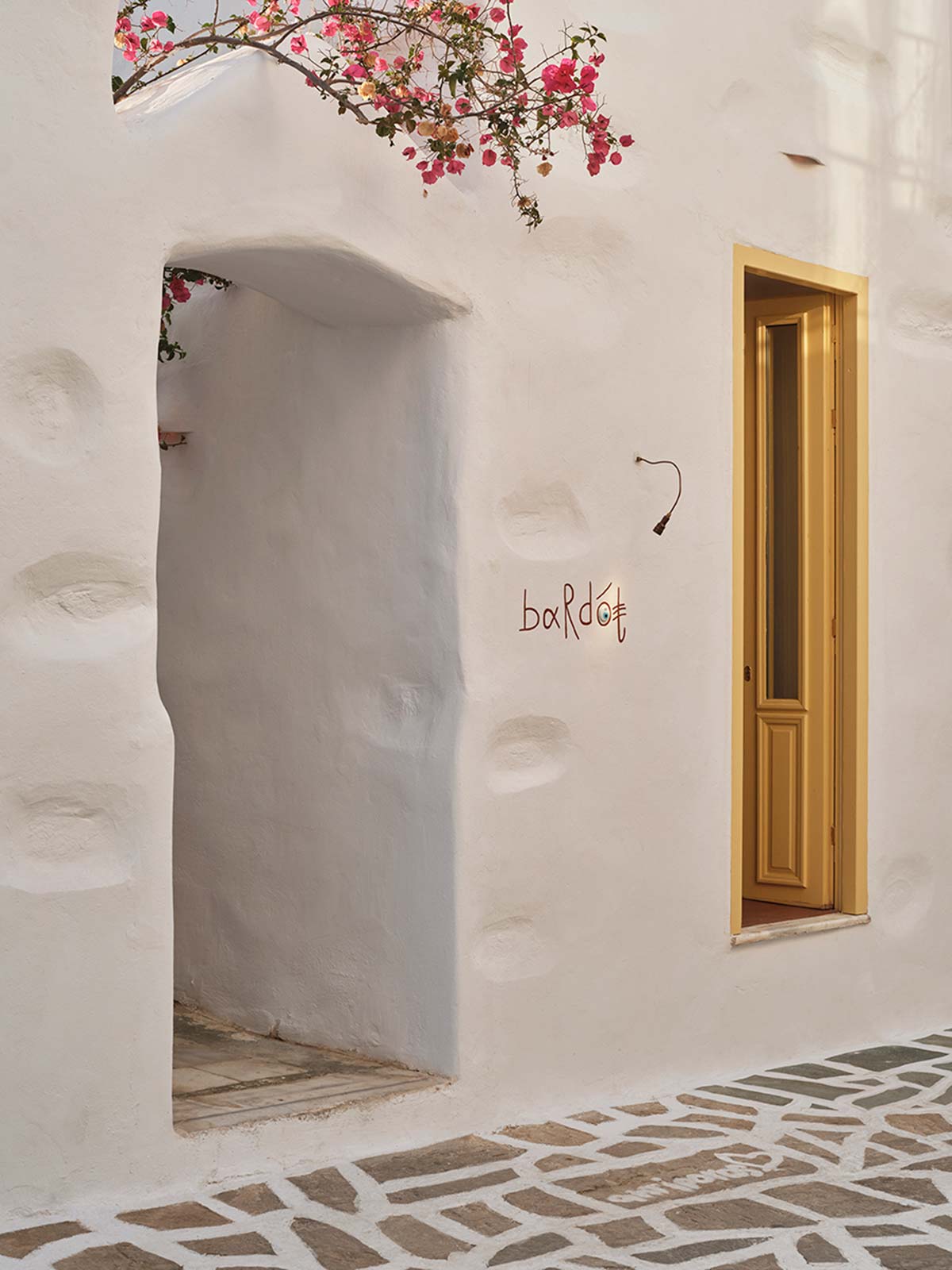
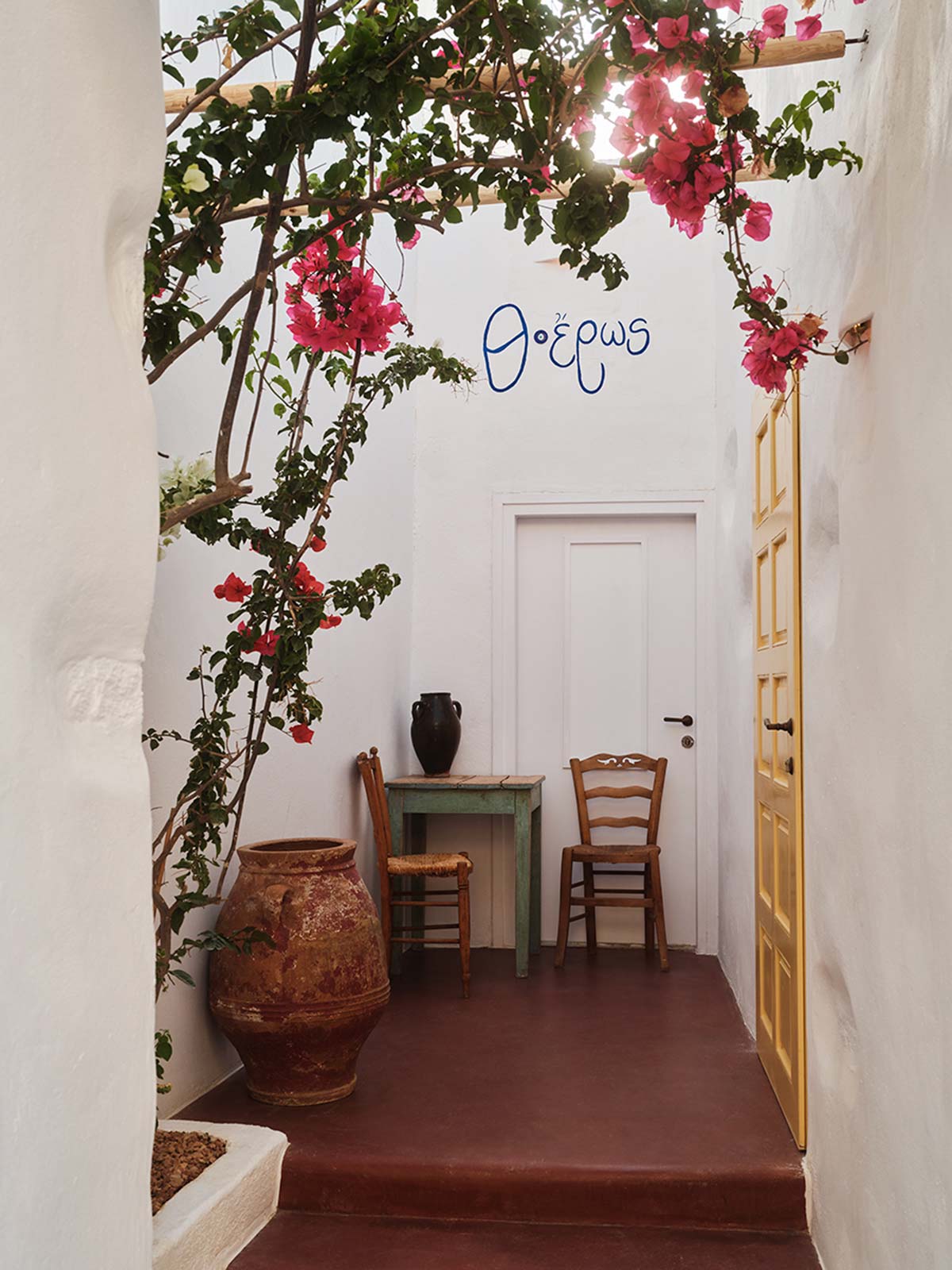
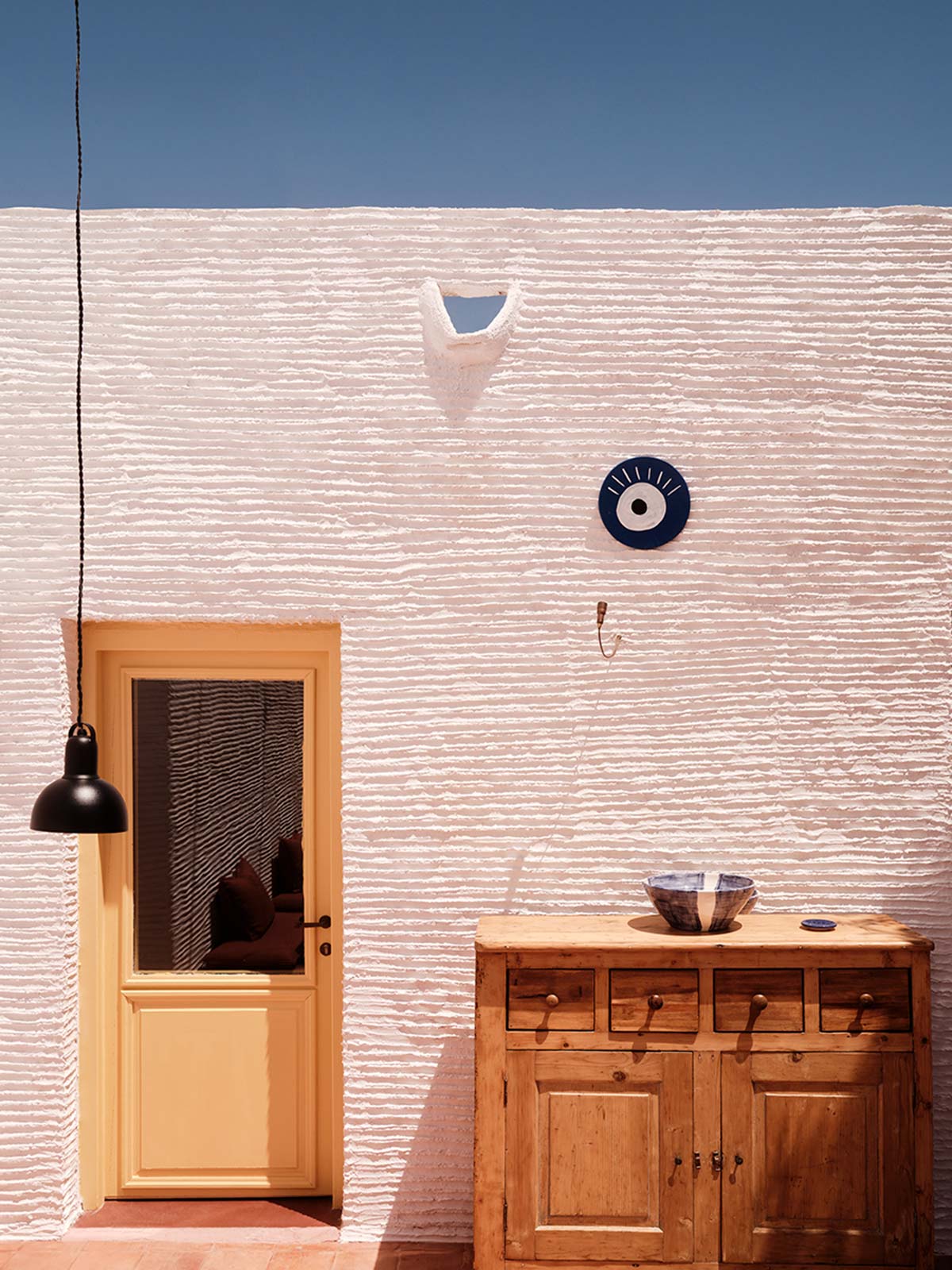
The architect Andreas Kostopoulos, one of the two founding partners of the New York-based studio Manhattan Projects, has worked in close contact with the creators of Bardot to make their vision become a reality. Without indulging in nostalgia, the architectural design embraces traditional craftsmanship and contemporary influences. The entrance door has been put back in its original position, restoring the entry sequence through an open plaza.
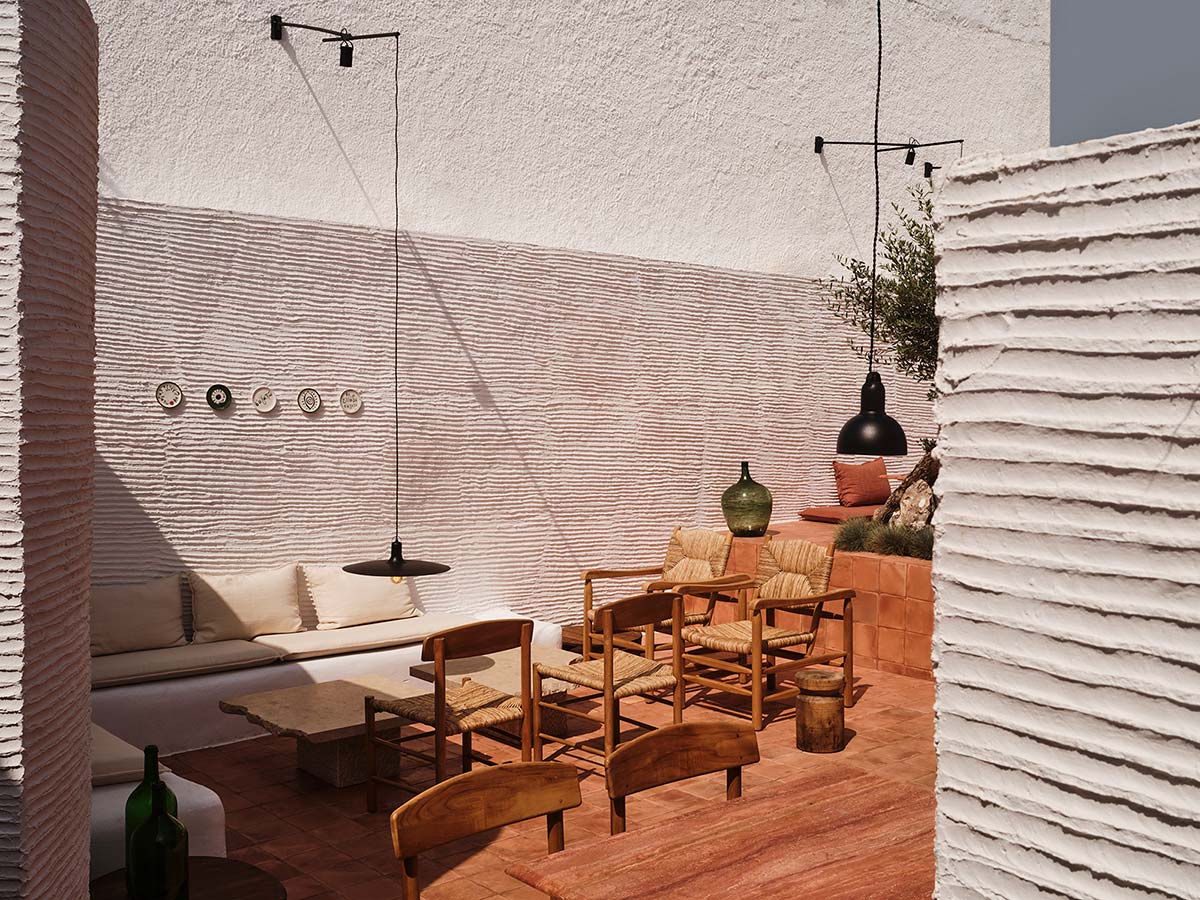
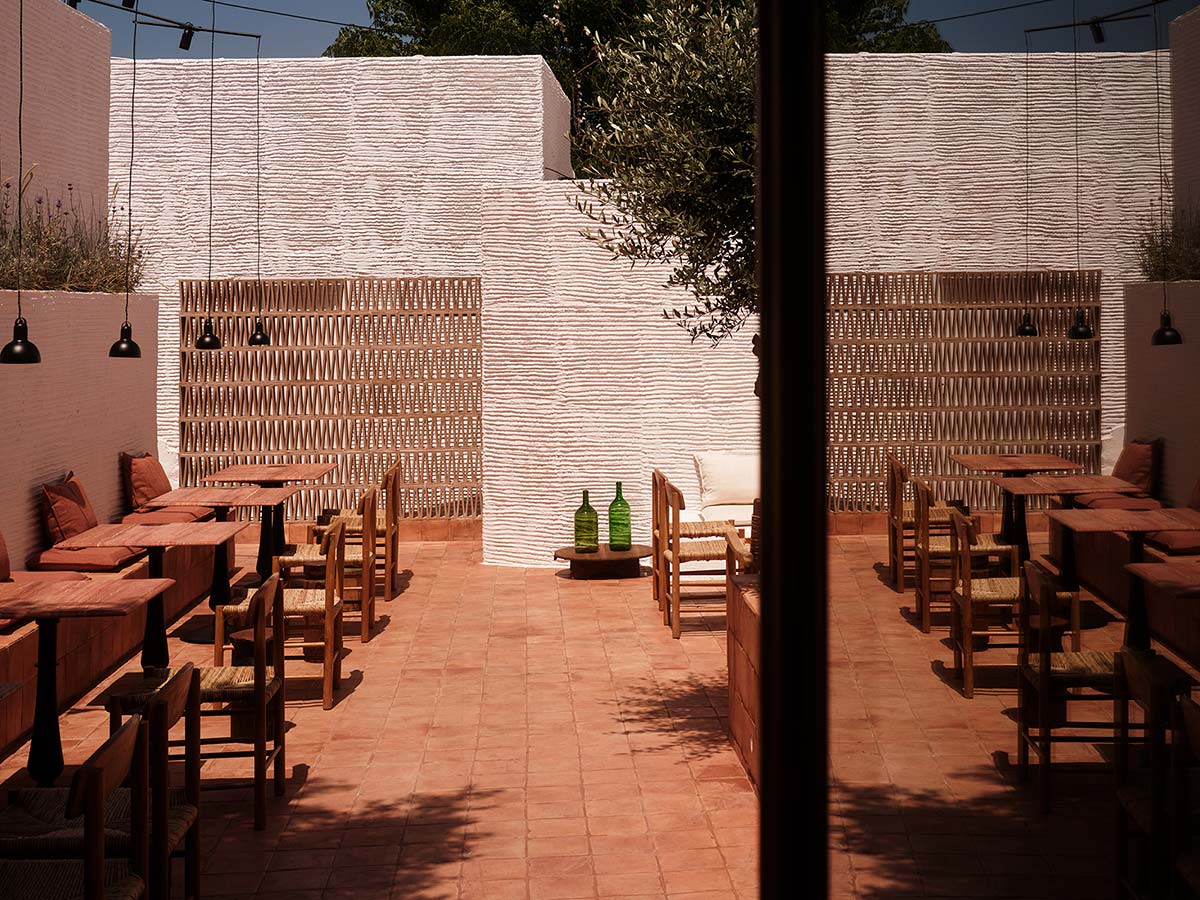
The façade – made with stucco of hay, clay and limestone – rediscovers its age-old dignity, displaying stones with vivid textures set into the walls to ensure structural strength. This traditional masonry has been surgically reveals with the tools of archaeology. Inside, a series of grotto-like spaces are clad in white limestone, a common feature of all the Greek islands.
The bar stands on a clay surface with a double curvature, imitating the contours of the surrounding walls. Made of solid walnut wood with a glowing lacquer finish derived from the nautical sector, the thick, rounded mass of the worktop seems to be suspended in the air. The seating emerges from the walls, where an antique fireplace is transformed into a welcoming daybed. The mirrors are strategically placed in the openings to produce a trompe l’oeil effect.
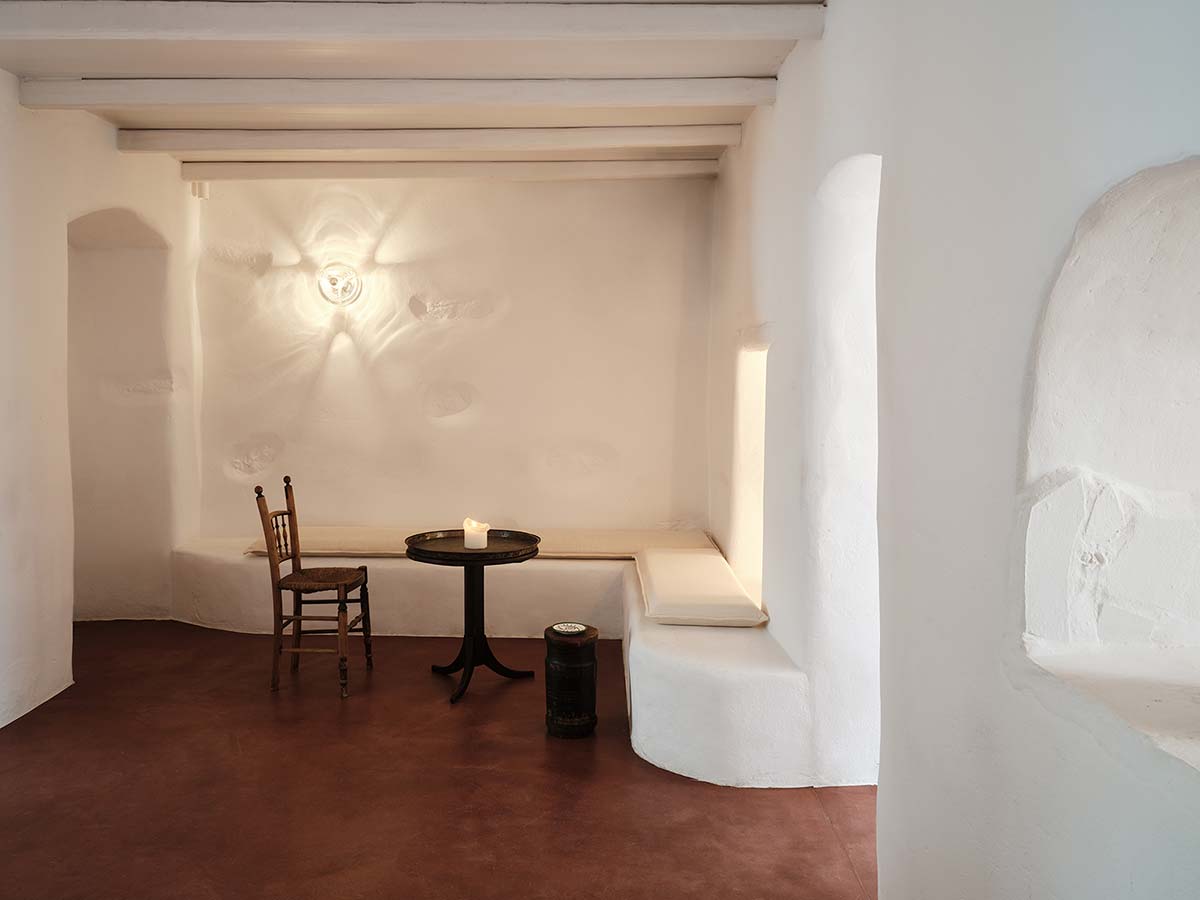
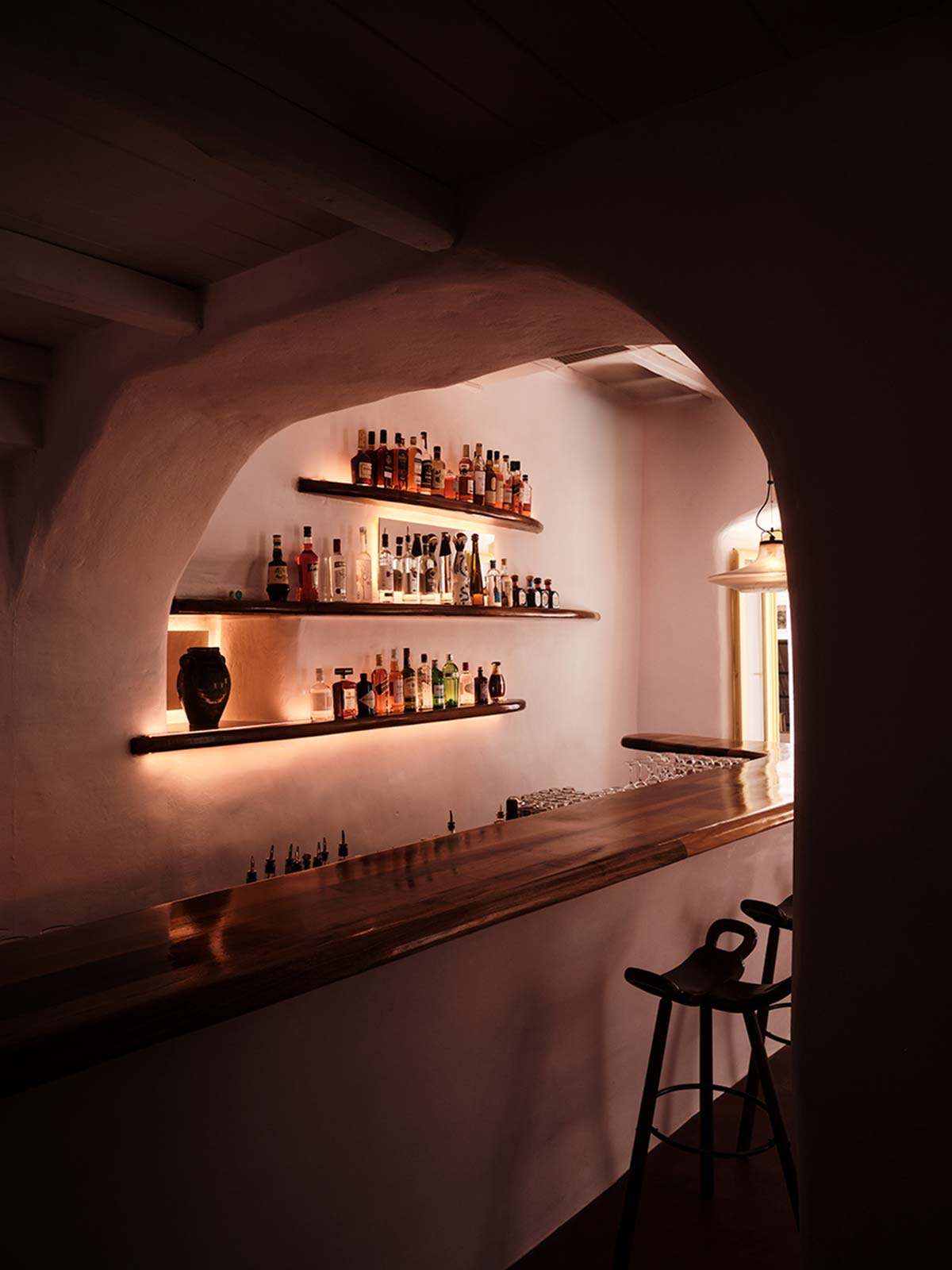
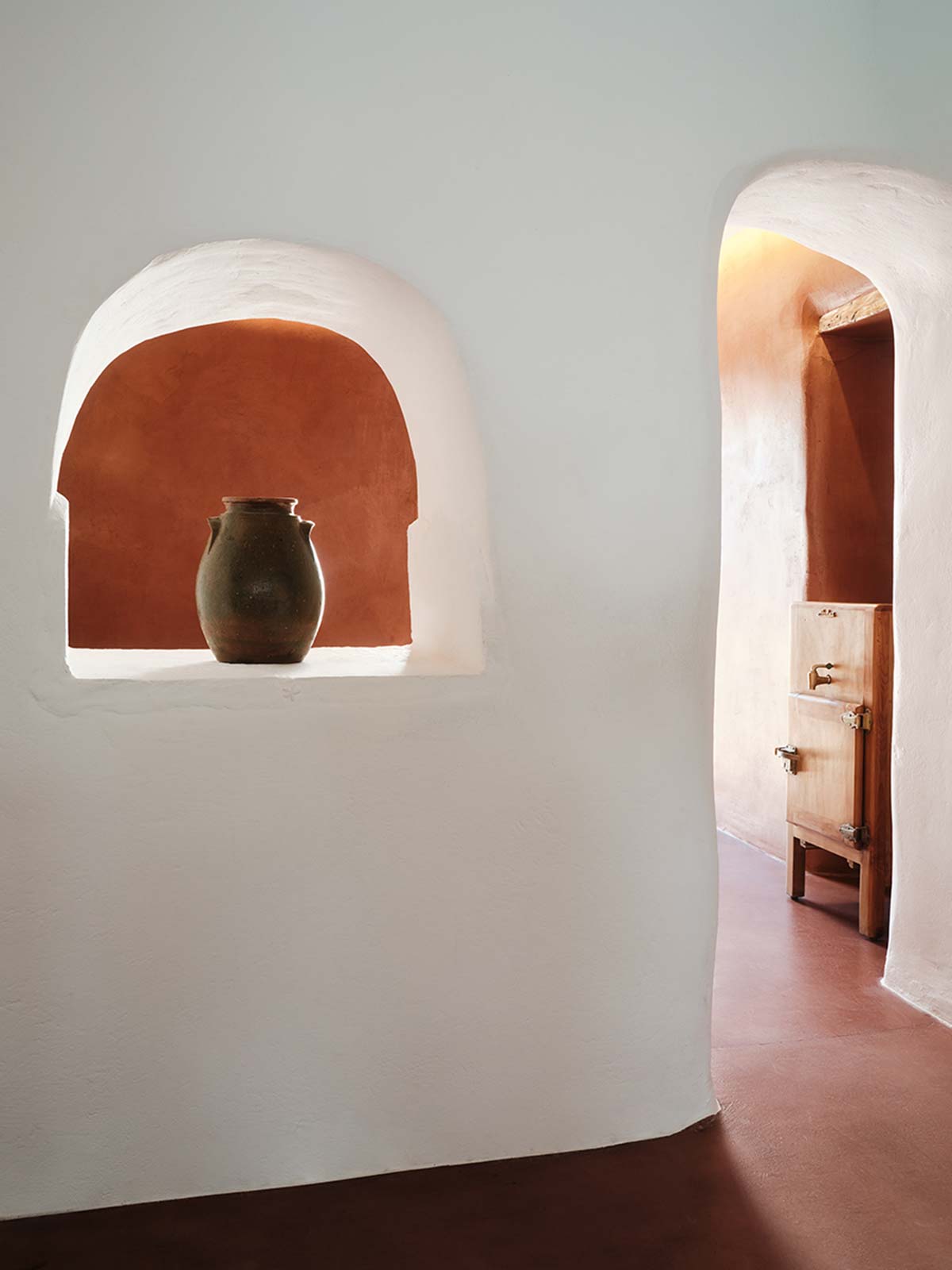
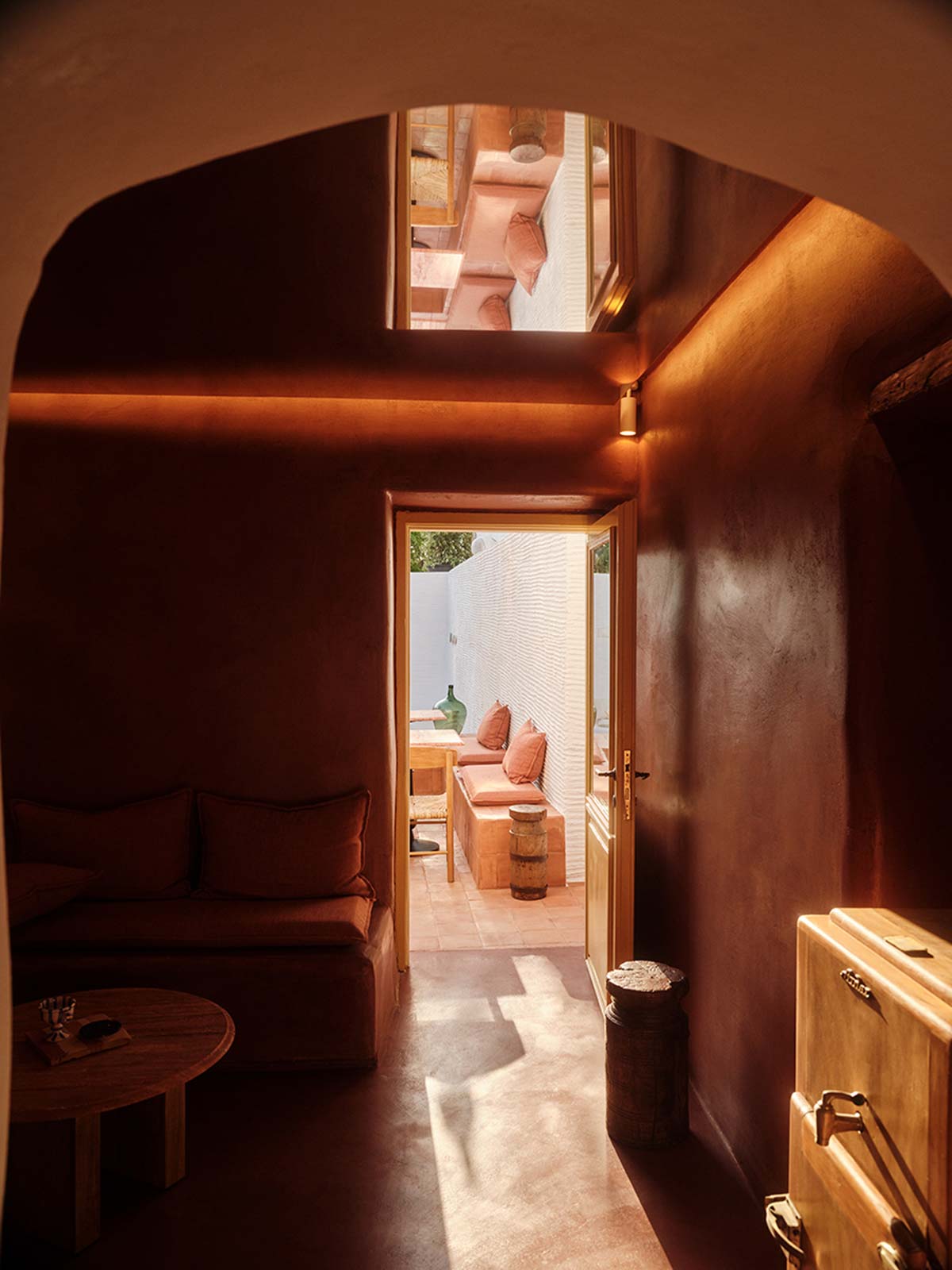
The project unifies the internal floors and outdoor pavements with Miltos, a copper-colored mineral venerated by the ancient Greeks as a super-substance, and probably utilized by the shipbuilders who once resided in the building. Inside, a mixture of red ochre, limestone and stand traditionally used for floors produces a smooth, sensual surface. Outside, crafted tiles in clay laden with red ochre form the patio, which bends vertically and horizontally to create steps, banquettes and a new planter for a sturdy olive tree, which has survived previous renovations and acts as a symbol of longevity.
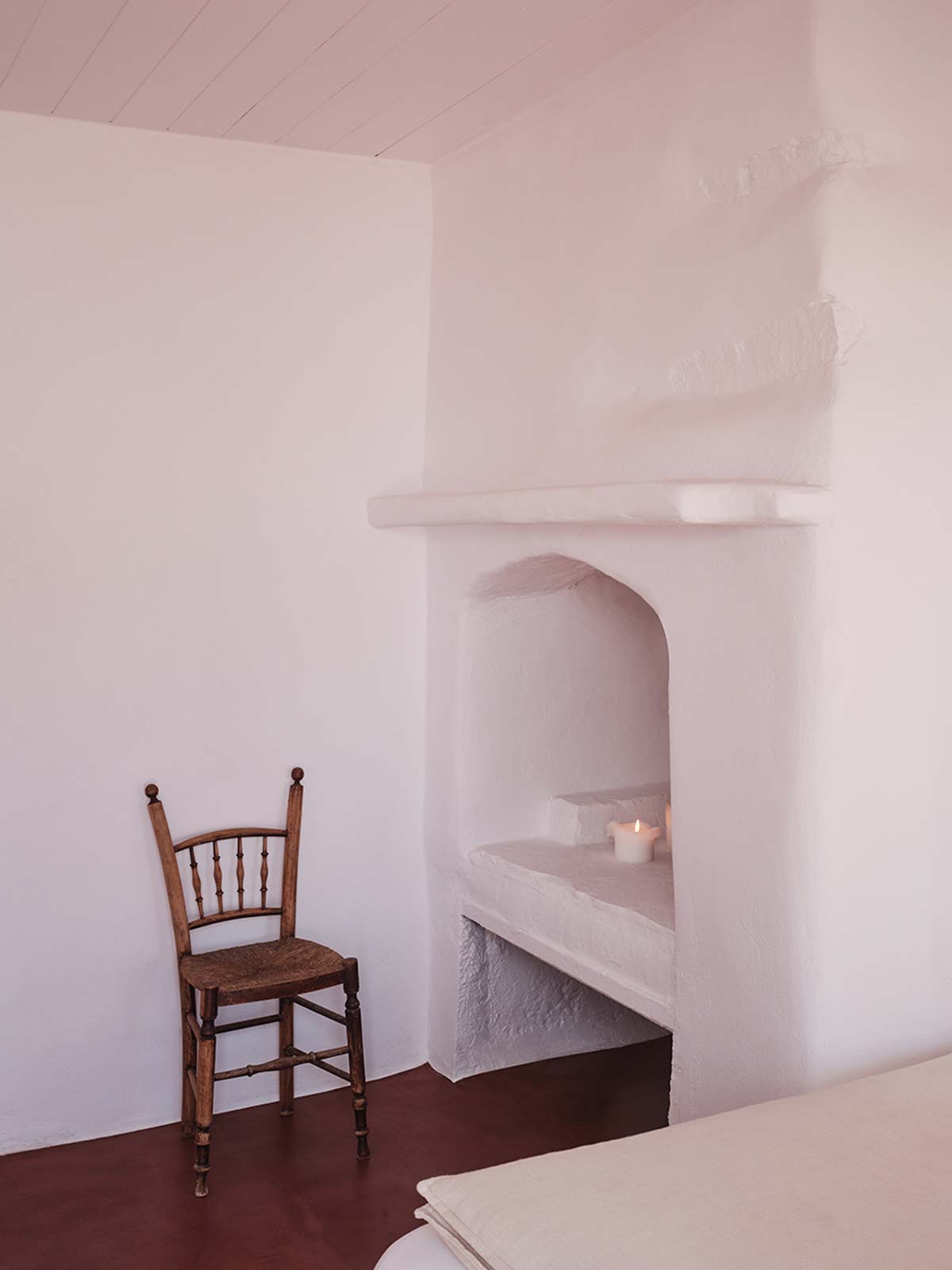
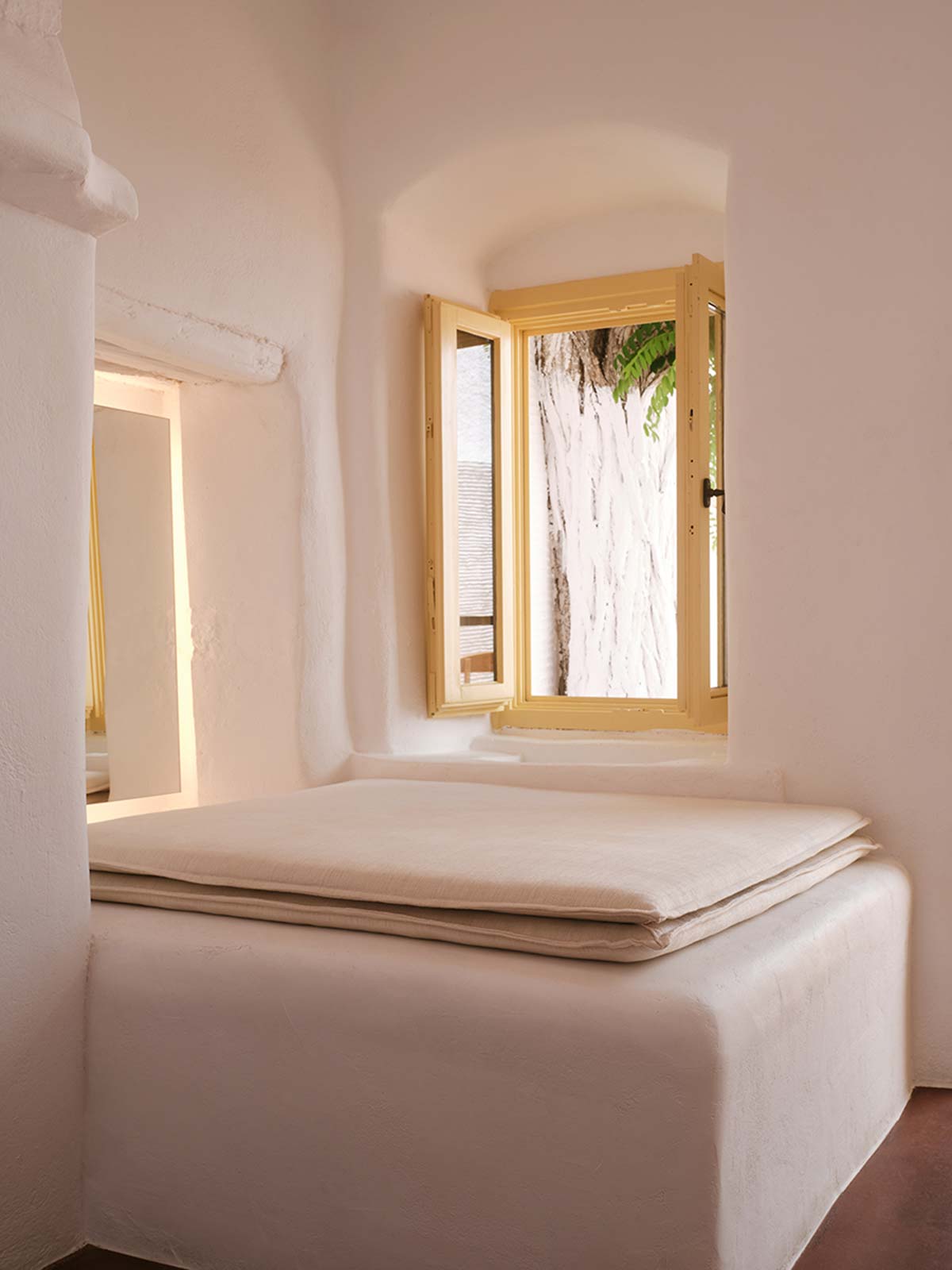
The furnishings are a collection of modern and mid-century pieces, together with antiques and found objects with roots in the history of the Mediterranean. A wooden butter churn now functions as a stool, while antique oil jars decorate the openings of the walls and windows. The painted murals and ceramic plates by the artist Christianna Economou bring a playful touch of Greek and Cycladic culture. The array of old and new elements becomes a way of reimagining the fresh Aegean environment.

